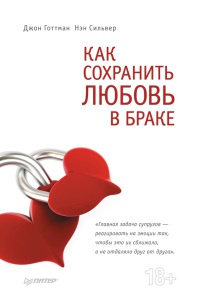Читать книгу "Химия любви. Научный взгляд на любовь, секс и влечение - Брайан Александер"
Шрифт:
Интервал:
Закладка:
Goldstein, R., et al. Decreased Prefrontal Cortical Sensitivity to Monetary Reward Is Associated with Impaired Motivation and Self-Control in Cocaine Addiction. American Journal of Psychiatry, January 2007.
Kelley, A., and K. Berridge. The Neuroscience of Natural Rewards: Relevance to Addictive Drugs. Journal of Neuroscience, May 1, 2002.
Kiecolt-Glaser, J., et al. Marital Quality, Marital Disruption, and Immune Function. Psychosomatic Medicine 49, no. 1 (January-February 1987).
Koob, G. Interview with the authors, December 21, 2011.
Koob, G. The Role of CRF and CRF-Related Peptides in the Dark Side of Addiction. Brain Research, February 16, 2010.
Koob, G., and N. Volkow. Neurocircuitry of Addiction. Neuropsychopharmacology, August 26, 2009.
Koob, G., and E. Zorrilla. Neurobiological Mechanisms of Addiction: Focus on Corticotropin-Releasing Factor. Current Opinion in Investigational Drugs, January 2010.
Krawczyk, M., et al. A Switch in the Neuromodulatory Effects of Dopamine in the Oval Bed Nucleus of the Stria Terminalis
Associated with Cocaine Self-Administration in Rats. Journal of Neuroscience, June 15, 2011.
Krishnan, В., et al. Dopamine Receptor Mechanisms Mediate Corticotropin-Releasing Factor-Induced Long-Term Potentiation in the Rat Amygdala Following Cocaine Withdrawal. European Journal of Neuroscience, March 2010.
Lester, D., et al. Motives for Suicide – A Study of Australian Suicide Notes. Crisis, 2004.
Lester, D., et al. Correlates of Motives for Suicide. Psychological Reports, October 2003.
Liu, Y., et al. Social Bonding Decreases the Rewarding Properties of Amphetamine Through a Dopamine D1 Receptor-Mediated Mechanism. Journal of Neuroscience, June 1, 2011.
Liu, Y., et al. Nucleus Accumbens Dopamine Mediates Amphetamine-Induced Impairment of Social Bonding in a Monogamous Rodent Species. Proceedings of the National Academy of Sciences, January 19, 2010.
Loewenstein, G. Emotions in Economic Theory and Economic Behavior. AEA Papers and Proceedings, May 2000.
Lowenstein, G. Out of Control: Visceral Influences on Behavior. Organizational Behavior and Human Decision Processes 65, no. 3 (1996).
Martin-Fardon, R., et al. Role of Innate and Drug-Induced Dysregulation of Brain Stress and Arousal Systems in Addiction: Focus on Corticotropin-Releasing Factor; Nocieptin/Orphanin FQ, and Orexin/Hypocretin. Brain Research, February 16, 2010.
McGregor, I., et al. From Ultrasocial to Antisocial: A Role for Oxytocin in the Acute Reinforcing Effects and Long-Term Adverse Consequences of Drug Use? British Journal of Pharmacology 154 (2008): 358–368.
Murray, F. Interview with the authors, December 22, 2011.
Najib, A., et al. Regional Brain Activity in Women Grieving a Romantic Relationship Breakup. American Journal of Psychiatry, December 2004.
Navarro-Zaragoza, J., et al. Effects of Corticotropin-Releasing Factor Receptor-1 (CRF1R) Antagonists on the Brain Stress System
Responses to Morphine Withdrawal. Molecular Pharmacology, February 16, 2010.
O'Connor, M. F., et al. Craving Love? Enduring Grief Activates Brain's Reward Center. Neuroimage, August 15, 2008.
Petrovic, В., et al. The Influence of Marital Status on Epidemiological Characteristics of Suicides in the Southeastern Part of Serbia. Central European Journal of Public Health, March 2009.
Pfaus, J. Interview with the authors, June 8–9, 2011.
Pine, A., et al. Dopamine, Time, and Impulsivity in Humans. Journal of Neuroscience, June 30, 2010.
Pitchers, K., et al. Neuroplasticity in the Mesolimbic System Induced by Natural Reward and Subsequent Reward Abstinence. Biological Psychiatry, May 1, 2010.
Pridmore, S., and Z. Majeed. The Suicides of the Metamorphoses. AustralAsia Psychiatry, February 2011.
Rudnicka-Drozak, E., et al. Psychosocial and Medical Conditions for Suicidal Behaviors Among Children and Young People in Lublin Province. Wiadomosci Lekarskie, supp. 1 (2002).
Rutherford, H., et al. Disruption of Maternal Parenting Circuitry by Addictive Process: Rewiring of Reward and Stress Systems. Frontiers in Psychiatry, July 6, 2011.
Shalev, U., et al. Role of CRF and Other Neuropeptides in Stress-Induced Reinstatement of Drug Seeking. Brain Research, February 16,2010.
Stoessel, C, et al. Differences and Similarities on Neuronal Activities of People Begin Happily and Unhappily in Love: A Functional Magnetic Resonance Imaging Study. Neuropsychobiology, May 24, 2011.
Takahashi, H, et al. Dopamine Dl Receptors and Nonlinear Probability Weighting in Risky Choice. Journal of Neuroscience, December 8, 2010.
Troisi, A., et al. Social Hedonic Capacity Is Associated with the A118G Polymorphism of the mu-Opioid Receptor Gene (OPRM1) in Adult Healthy Volunteers and Psychiatric Patients. Social Neuroscience 6 (2011): 88–97.
Urban, N, et al. Sex Differences in Striatal Dopamine Release in Young Adults After Oral Alcohol Challenge: A PET Imaging Study with [11C] Raclopride. Biological Psychiatry, October 15, 2010.
Van den Bergh, В., et al. Bikinis Instigate Generalized Impatience in Intertemporal Choice. Journal of Consumer Research, December 5, 2007.
Wise, A., and M. Morales. A Ventral Tegmental CRF-Glutamate-Dopamine Interaction in Addiction. Brain Research, February 16, 2010.
Wise, R. Dopamine and Reward: The Anhedonia Hypothesis 30 Years On. Neurotoxicity Research, October 2008.
Young, K., et al. Amphetamine Alters Behavior and Mesocorticolimbic Dopamine Receptor Expression in the Monogamous Female Prairie Vole. Brain Research, January 7, 2011.
Younger, J., et al. Viewing Pictures of a Romantic Partner Reduces Experimental Pain: Involvement of Neural Reward Systems. PLoS One, October 13, 2010.
Глава 8
Aragona, В., et al. Nucleus Accumbens Dopamine Differentially Mediates the Formation and Maintenance of Monogamous Pair Bonds. Nature Neuroscience, January 2006.
Ashton, G. Mismatches in Genetic Markers in a Large Family Study. American Journal of Human Genetics 32 (1980): 601–613.
Baugh, A., ed. Chaucer's Major Poetry. Upper Saddle River, NJ: Prentice-Hall, 1963.
Buckholtz, J. Interview with the authors, January 19, 2012.
Buckholtz, J., et al. Dopaminergic Network Diff erences in Human Impulsivity. Science, July 30, 2010.
Внимание!
Сайт сохраняет куки вашего браузера. Вы сможете в любой момент сделать закладку и продолжить прочтение книги «Химия любви. Научный взгляд на любовь, секс и влечение - Брайан Александер», после закрытия браузера.




